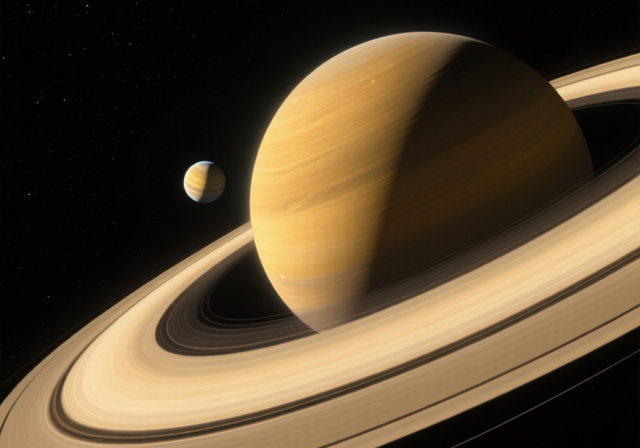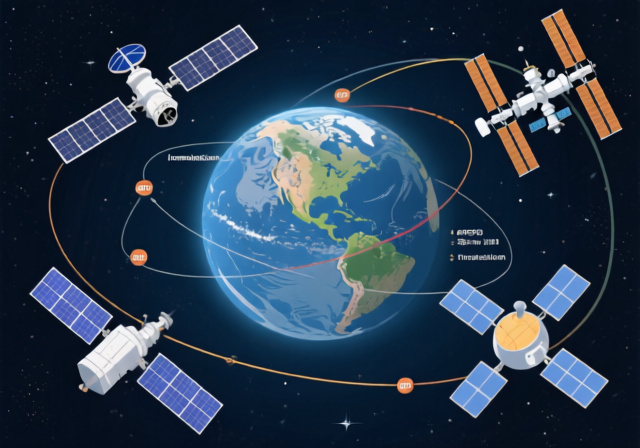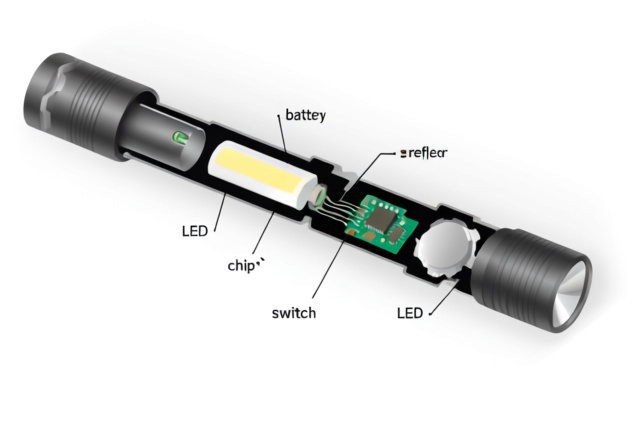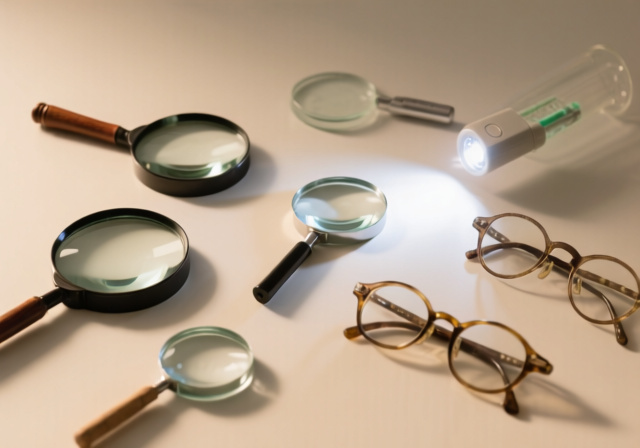



Saturn, the crown jewel of our solar system, has captivated humanity since ancient observers first noticed its steady golden glow in the night sky. As a photography enthusiast and amateur astronomer, I’ve spent countless nights observing this magnificent planet, and it never fails to take my breath away through the eyepiece of a telescope.
Saturn is the sixth planet from the Sun and the second-largest planet in our solar system, best known for its spectacular ring system and being a gas giant composed mostly of hydrogen and helium. What makes Saturn truly special is its unique combination of massive size, stunning rings, and intriguing moons that offer endless opportunities for both scientific discovery and astrophotography.
In this comprehensive guide, you’ll discover everything from Saturn’s basic characteristics to advanced observation techniques. I’ll share practical tips for viewing and photographing Saturn, explain the mysterious 2025 ring disappearance event, and connect you with the best equipment for your astronomy journey. Whether you’re a student, educator, or photography enthusiast, these Saturn facts will deepen your appreciation of our solar system’s most beautiful planet.
Before diving into detailed facts, here’s a quick reference table with Saturn’s most important characteristics. I’ve included recent updates and comparisons to help put these numbers in perspective.
| Property | Saturn | Earth Comparison | Notes |
|---|---|---|---|
| Type | Gas Giant | Terrestrial Planet | No solid surface |
| Diameter | 120,536 km | 12,742 km | 9.5x Earth’s diameter |
| Mass | 5.68 × 10^26 kg | 5.97 × 10^24 kg | 95x Earth’s mass |
| Distance from Sun | 1.4 billion km | 150 million km | 9.5 AU |
| Orbital Period | 29.5 Earth years | 365.25 days | One Saturn year |
| Rotation Period | 10.7 hours | 24 hours | Fastest rotation of any planet |
| Moons | 274 (as of 2025) | 1 | Newly discovered in 2025 |
| Ring System | 7 main groups | None | Will disappear in March 2025 |
| Atmosphere | 96% H₂, 3% He | 78% N₂, 21% O₂ | Mostly hydrogen and helium |
| Temperature | -178°C average | 15°C average | Varies with depth |
| Density | 0.687 g/cm³ | 5.51 g/cm³ | Would float in water |
Saturn’s rings are undoubtedly its most famous feature, and for good reason. This magnificent system isn’t solid but consists of countless particles orbiting the planet in perfect harmony. The rings are so vast they would stretch from Earth to the Moon, yet they’re remarkably thin – averaging only 20 meters in thickness.
What makes up Saturn’s rings? Primarily water ice particles ranging from microscopic dust to chunks as large as houses. Scientists estimate the rings contain about 40% ice and 60% rock, with purity varying between different ring groups. The particles constantly collide and interact, creating beautiful spiral patterns and waves that ripple through the system.
The ring system is organized into seven main groups, designated A through G. The brightest and most massive are rings A and B, separated by the famous Cassini Division – a gap 2,920 miles wide that’s clearly visible through amateur telescopes. Ring C, the innermost main ring, is more transparent and allows glimpses of the planet through its material.
March 2025 marks a special celestial event: Saturn’s rings will seem to disappear from view. This happens as Saturn’s orbital position causes the rings to align edge-on with Earth, making their 175,000-mile span appear as an almost invisible line. During this time, even large telescopes will struggle to detect the rings, though they’ll return to view gradually over the following months.
Saturn’s family of moons rivals a small solar system in complexity and diversity. The recent discovery of 128 new moons in 2025 brought Saturn’s total to 274 confirmed satellites, far surpassing Jupiter’s 95 moons. Each moon tells a unique story of planetary formation and evolution.
Titan stands out as the crown jewel of Saturn’s moons. Larger than Mercury, Titan possesses a thick atmosphere denser than Earth’s, composed mainly of nitrogen with methane clouds. What makes Titan truly remarkable is its liquid cycle – but instead of water, it rains, evaporates, and flows liquid methane and ethane across the surface. The Cassini mission revealed lakes and seas of liquid hydrocarbons, making Titan the only body besides Earth known to have stable surface liquids.
Enceladus, though smaller, presents one of the most exciting prospects for finding life beyond Earth. This icy moon shoots massive geysers of water vapor from its south polar region, containing organic compounds and salt. These plumes originate from a subsurface ocean that may contain hydrothermal vents – similar to those where life thrives in Earth’s deepest oceans.
Other notable moons include Rhea, Saturn’s second-largest moon, heavily cratered and possibly having its own ring system; Iapetus, with its dramatic two-toned appearance – one side as dark as coal, the other as bright as snow; and Mimas, nicknamed the “Death Star moon” due to its massive Herschel Crater creating a resemblance to the Star Wars weapon.
Saturn’s classification as a gas giant means it lacks a solid surface. If you could descend through its atmosphere, you’d encounter increasingly dense gas layers before reaching a core of rock and metal. The planet’s composition is approximately 96% hydrogen and 3% helium, with traces of other elements creating its distinctive golden appearance.
One of Saturn’s most intriguing features is its extreme weather. The planet experiences the fastest winds in the solar system, reaching speeds of 1,800 km/h near the equator. These winds create distinct bands of clouds that circle the planet, similar to Jupiter but more subtle in appearance. The atmosphere contains ammonia crystals in the upper layers and ammonium hydrosulfide deeper down, contributing to the planet’s coloration.
Perhaps most mysterious is Saturn’s hexagonal storm at the north pole. This geometrically perfect hexagon spans about 30,000 kilometers – wider than two Earths – with winds racing along its edges at 320 km/h. Scientists believe this strange formation results from the interaction of wind speeds at different latitudes, creating a stable, standing wave pattern.
Saturn’s magnetic field is equally impressive, extending nearly 1 million miles into space and generating its own magnetosphere. This field is 578 times stronger than Earth’s and creates auroras near the poles when charged particles from the solar wind interact with the upper atmosphere.
Observing Saturn is one of the most rewarding experiences for amateur astronomers. Even without equipment, Saturn appears as a bright golden star in the night sky. But with the right tools, you can witness its magnificent rings and even some of its largest moons.
For beginners, good astronomy binoculars (10×50 or larger) will reveal Saturn’s distinctive oval shape, hinting at the rings. I’ve found that through 10×50 binoculars, Saturn appears clearly different from stars – a tiny oval that doesn’t twinkle. For a better view, check out our Celestron SkyMaster 25×70 review – these powerful binoculars can show Saturn’s rings as separate from the planet’s disc.
Telescopes unlock Saturn’s true beauty. With a budget telescope under $100, you can easily see the rings and Titan, Saturn’s largest moon. Magnifications of 25x or higher begin to separate the rings from the planet, while 100x-200x reveals the Cassini Division on good nights. The choice between reflector and refractor telescopes depends on your needs – reflectors offer more aperture for the money, while refractors provide sharper planetary views.
For photography, Saturn presents unique challenges. Its small apparent size requires long focal lengths and high magnification. Successful planetary imaging typically involves a webcam or dedicated planetary camera, capturing thousands of frames and stacking the best ones. I recommend tracking mounts to compensate for Earth’s rotation and color filters to enhance atmospheric details.
The best times to observe Saturn occur during opposition, when Earth passes directly between Saturn and the Sun. During these periods, Saturn appears largest and brightest, rising at sunset and setting at sunrise. Check astronomy apps or websites for the next opposition date – usually occurring once every 378 days.
Our understanding of Saturn has evolved dramatically over the centuries, from ancient observations with the naked eye to sophisticated spacecraft missions. Galileo Galilei was the first to observe Saturn’s rings in 1610, though his primitive telescope couldn’t resolve them clearly, leading him to describe Saturn as having “ears.”
The space age revolutionized our knowledge. Pioneer 11 became the first spacecraft to visit Saturn in 1971, followed by Voyager 1 in 1980 and Voyager 2 in 1981. These brief flybys revealed the complexity of Saturn’s rings, discovered new moons, and provided stunning images that transformed our perception of the planet.
The pinnacle of Saturn exploration came with the Cassini-Huygens mission (2004-2017). This ambitious project involved the Cassini orbiter spending 13 years studying Saturn, its rings, and moons, while the Huygens probe descended to Titan’s surface – the first landing on a moon in the outer solar system. Cassini’s discoveries included seasonal changes on Saturn, methane rain on Titan, and water geysers on Enceladus.
Looking forward, scientists are planning new missions to explore Saturn’s system more thoroughly. Proposed missions include orbiters to study Enceladus’s subsurface ocean and potential life, and drones to explore Titan’s surface and atmosphere. These future missions promise to unravel more of Saturn’s mysteries and potentially answer one of humanity’s biggest questions: Are we alone in the universe?
Saturn’s rings consist of billions of ice and rock particles ranging from dust-sized grains to mountain-sized chunks. The rings are about 96% water ice with some rocky material, organized into seven main groups labeled A through G.
As of 2025, Saturn has 274 confirmed moons, making it the planet with the most moons in our solar system. 128 new moons were discovered in 2025, significantly increasing the previous count.
Saturn isn’t actually losing its rings in 2025. The rings will appear to disappear from Earth’s view in March 2025 when Saturn tilts edge-on to our line of sight. This optical illusion happens every 15 years as Saturn orbits the Sun.
Yes, Saturn is visible to the naked eye as a bright golden-yellow star. It doesn’t twinkle as much as stars and appears steadily in the night sky. The best viewing times are during opposition when Saturn is at its brightest.
Saturn is often called the “Ringed Planet” or “Lord of the Rings” due to its spectacular ring system. In mythology, Saturn is named after the Roman god of agriculture and wealth, equivalent to the Greek god Cronus.
A day on Saturn lasts about 10.7 Earth hours. This makes Saturn the planet with the shortest day in our solar system. The rapid rotation causes the planet to bulge at the equator and flatten at the poles.
Saturn continues to amaze scientists and astronomy enthusiasts alike with its complex system of rings, diverse moons, and mysterious weather patterns. From the practical challenge of observing this distant world through amateur telescopes to the profound questions it raises about planetary formation and the potential for life beyond Earth, Saturn offers something for everyone.
As we look forward to the exciting 2025 ring disappearance event and future missions to explore Titan and Enceladus, our understanding of Saturn will only grow deeper. Whether you’re just beginning your astronomy journey or are an experienced observer, Saturn provides endless opportunities for discovery and wonder. Grab a telescope, look up at the night sky, and experience the magic of Saturn for yourself.







